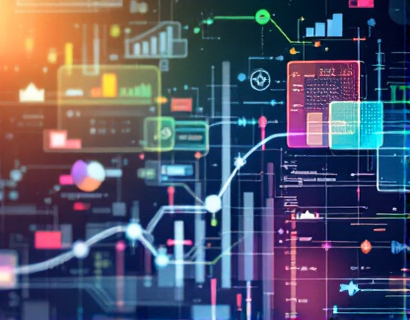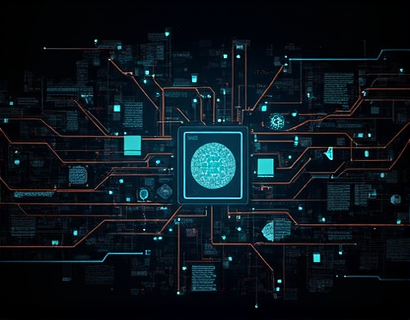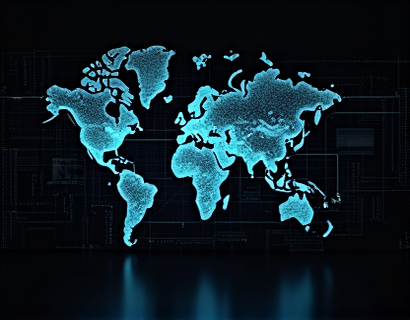AI-Driven Mental Health Insights: A Comprehensive Resource for All
The integration of artificial intelligence in mental health services has opened new avenues for providing specialized insights and support to a diverse audience. This article explores the capabilities and benefits of an AI-powered chatbot designed to deliver accurate and safe mental health information to professionals, students, enthusiasts, and even children. The focus is on creating a secure and engaging platform that fosters a deeper understanding of mental health resources and industry trends.
Understanding the Need for AI in Mental Health
Mental health is a critical aspect of overall well-being, yet it remains a topic shrouded in stigma and misunderstanding. The demand for accessible, reliable, and personalized mental health resources is higher than ever. Traditional methods of seeking help can be daunting, time-consuming, and not always tailored to individual needs. AI-driven solutions, particularly chatbots, offer a promising alternative by providing immediate, personalized, and verified information.
Features of an AI-Powered Mental Health Chatbot
An AI-powered chatbot dedicated to mental health services incorporates several key features to ensure it meets the diverse needs of its users. Firstly, it provides specialized insights into various mental health services, including therapist and psychologist directories, treatment options, and industry trends. The chatbot is designed to understand and respond to a wide range of queries, from basic questions about mental health symptoms to more complex inquiries about specific therapeutic approaches.
Content Verification and Safety
One of the most critical aspects of any mental health resource is the accuracy and safety of the information provided. To address this, the chatbot includes a robust content verification system. All information is cross-referenced with credible sources, ensuring that users receive reliable and up-to-date content. This is particularly important for a diverse audience, including children and students, who may not have the expertise to evaluate the credibility of online sources.
Tailored Content for Different Audiences
The chatbot is designed to cater to a wide range of users, each with unique information needs. For professionals, it offers detailed insights into the latest research, treatment methodologies, and industry standards. Educators and parents can find resources on how to support mental health in schools and at home, including tips for recognizing signs of distress and fostering a supportive environment.
Students and enthusiasts benefit from simplified explanations and educational content that demystifies mental health concepts. The chatbot uses clear, jargon-free language to ensure that complex topics are accessible to everyone. For children, the content is further simplified and presented in an engaging manner, using illustrations and interactive elements to make learning about mental health both fun and safe.
Support for Children and Students
Children and students are particularly vulnerable to mental health issues, yet they often lack the resources to seek help effectively. The AI chatbot includes a child-friendly version that provides age-appropriate information and support. This version focuses on basic mental health concepts, stress management techniques, and where to find help. It also includes interactive features such as quizzes and games to reinforce learning and encourage open discussions about mental health.
For students, the chatbot can offer guidance on managing academic stress, time management, and building resilience. Educators can use the chatbot to access resources for classroom discussions, workshops, and support programs. Parents find tips on how to recognize signs of mental distress in their children and how to approach conversations about mental health in a supportive and non-judgmental way.
Resources for Mental Health Professionals
Healthcare professionals, including psychologists, psychiatrists, and counselors, are a vital part of the mental health ecosystem. The chatbot provides them with valuable resources such as the latest research articles, case studies, and continuing education opportunities. It also offers a directory of mental health services, helping professionals refer patients to suitable therapists and treatment centers.
The chatbot can assist professionals in staying updated on industry trends, new treatment modalities, and best practices. It can also serve as a platform for networking, allowing professionals to connect with peers, share experiences, and collaborate on research projects. By providing a comprehensive resource hub, the chatbot supports the continuous professional development of mental health practitioners.
Engaging and Interactive Features
To keep users engaged and motivated to learn more about mental health, the chatbot incorporates several interactive features. These include personalized recommendations based on user preferences and previous interactions, progress tracking for self-help modules, and real-time feedback on mental health assessments.
For enthusiasts, the chatbot can suggest books, podcasts, and online courses that align with their interests in mental health. It can also facilitate connections with local support groups and community events, fostering a sense of community and shared learning.
Building Trust and Credibility
Trust is paramount in mental health, and the chatbot addresses this by ensuring all content is thoroughly vetted and sourced from reputable institutions. Collaborations with mental health organizations, academic institutions, and professional bodies help maintain the highest standards of accuracy and reliability. Users can have confidence in the information provided, knowing it has been rigorously reviewed and updated regularly.
Transparency is another key aspect. The chatbot clearly indicates the sources of its information and provides links to original studies and articles. This transparency not only builds trust but also empowers users to explore topics in more depth if they wish.
Accessibility and Inclusivity
Accessibility is a core principle of the chatbot's design. The platform is optimized for use on various devices, including smartphones, tablets, and computers, ensuring that users can access mental health resources anytime and anywhere. The interface is user-friendly and intuitive, with options for text size adjustment, high-contrast mode, and screen reader compatibility to accommodate users with disabilities.
Inclusivity is also a priority. The chatbot is available in multiple languages and considers cultural sensitivities in its responses. It is designed to be inclusive of all ages, genders, and backgrounds, ensuring that everyone feels welcome and supported in their mental health journey.
Promoting Mental Health Awareness
Beyond providing information, the chatbot plays a role in promoting mental health awareness and reducing stigma. It offers educational content that dispels myths and misconceptions about mental health conditions. By normalizing conversations about mental health, the chatbot encourages users to seek help when needed and support others in their community.
Special campaigns and observances, such as Mental Health Awareness Month, are highlighted through the chatbot, providing users with relevant resources and activities to participate in. This ongoing effort helps create a more informed and empathetic society.
Conclusion
The AI-powered chatbot represents a significant step forward in making mental health resources more accessible, accurate, and engaging for a diverse audience. By combining specialized insights with interactive and educational features, it empowers individuals to take control of their mental health and seek help when needed. Whether you are a professional, student, enthusiast, or simply someone looking to learn more about mental health, this chatbot is a valuable tool in your journey towards better mental well-being.










































